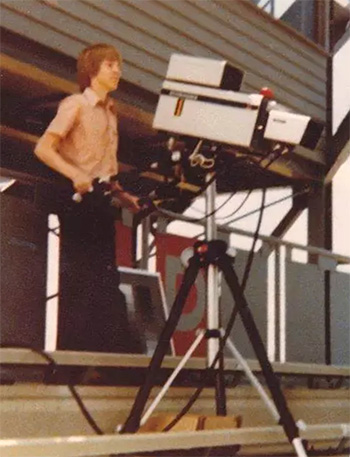Tip #1815: The Early Years of Cable TV
… for Codecs & Media
Tip #1815: The Early Years of Cable TV
Larry Jordan – LarryJordan.com
Local cable TV in the ’70’s meant small budgets and a lot of patience.


Dan Slentz writes in TV Technology about the early days of cable TV, which got its start providing a shared television antenna to communities with no access to broadcast television.
NOTE: My first paid position out of school was working in cable TV in Billings, Montana. I got hired and fired the same day. But, that’s a different story…
In 1977, the author writes, I was 14 years old and desperately wanting to work in radio or TV. At that time, being 14 really eliminated radio, plus I had a squeaky “kid voice.” Our local cable TV system was one of the earliest in the country and the local person with foresight to start a cable system, Claude Stevanus, would recognize the need for “local TV.”
In the mid-70’s, cable TV local origination/access was more common, but the facilities seemed to run about 10 years behind the technical curve of broadcast TV. In 1977, we had quads, film chains with color Norelco cameras, and our TBC was an Ampex and probably 8RU tall. We had two B&W General Electric cameras with lens turrets, and one Sony Color Trinicon; yes… a studio with two B&W and one color, (plus color film chain: 16mm film and 35mm slide).
If we were doing multi-camera work, this meant we put the main TBC in monochrome, or we were switching between color and B&W cameras! Yes, even in monochrome, you could certainly see a difference in quality between the GE B&W and Sony color camera running in monochrome.
My job was to get there as quickly as I could to help put together the news. This included putting removable plastic letters “in a menu board” for stocks, weather, etc., since we had no CG for this use. This method required luminance keying a camera tilting down while keyed over a slide. A steady arm was needed for the tilt or the words/letters would slightly bounce side to side.
Though it was cable TV, the cable operator ran some return copper paths to the headend and would end up putting a channel 2 modulator in our production truck. On the events where we would go LIVE from a remote location, we’d have to connect to a known return-path location. Someone would turn off the cable modulator at the station and the remote modulator would turn on. This would be like a TV broadcaster driving around with a back-up transmitter and turning it on from their remotes, but it worked!
EXTRA CREDIT
Reading this was like reading about my younger self. If you’ve been in the industry for a while, you’ll appreciate the retrospective. If you are new to media, you’ll wonder how we ever survived.


I found it interesting that cable organizations are common back in the day. After moving to our current area, my son told me that he wants to have cable TV to be able to watch movies. Thanks to this informative article, I’ll be sure to consult a trusted cable TV service as they can help us with our concerns.
I read this entire article with a huge smile on my face. My career in this business started around the same time, so, this was totally relatable. Thanks for posting, Larry. Cheers.
Evan:
Yup. My first day as a paid video professional was spent loading 1/2″ B&W video tape on a video tape deck for cable system playback. Totally screwed it up.
Larry